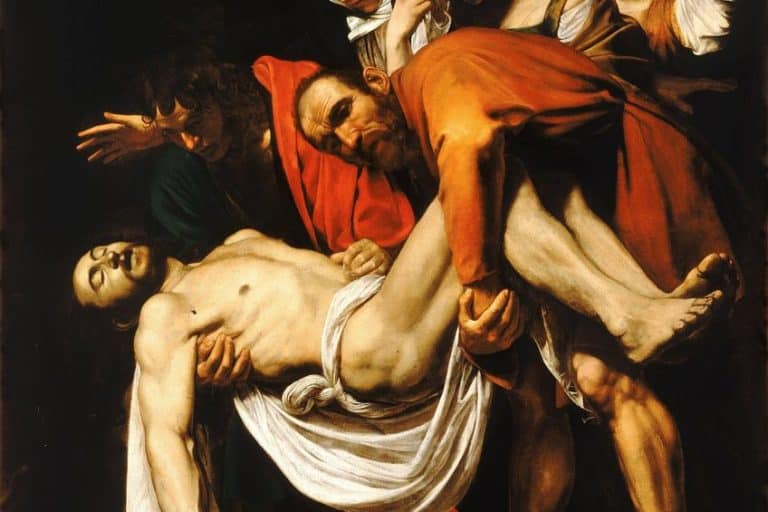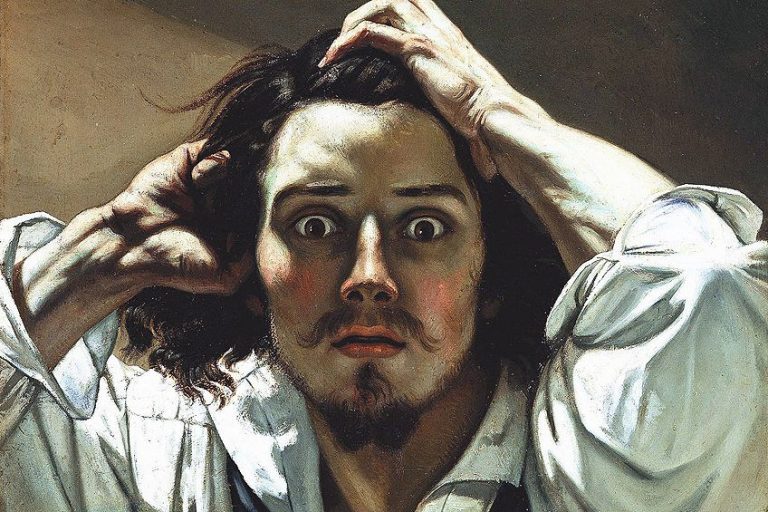“The Lute Player” by Frans Hals – Musical Portraiture
Frans Hals’s The Lute Player, painted between 1623 and 1624, exemplifies the dynamic and lively style that defines the Dutch Golden Age master’s oeuvre. Known for his innovative approach to portraiture, Hals captures the spontaneity and vivacity of his subjects through loose brushwork and a keen eye for detail. This work, depicting a young musician immersed in his performance, is a testament to Hals’ ability to convey movement and emotion. The painting not only showcases Hals’ technical prowess but also offers a glimpse into the cultural life of 17th-century Holland, where music and entertainment were integral to social gatherings. The Lute Player remains a celebrated piece in Hals’ extensive portfolio, highlighting his contribution to the evolution of portraiture in European art.
Key Takeaways
- Frans Hals painted The Lute Player between 1623 and 1624.
- The painting features a joyful actor in a jester’s costume.
- It is now part of the Louvre’s collection.
Artist and Context
| Artist | Frans Hals (c. 1582 – 1666) |
|---|---|
| Date Created | 1623 – 1624 |
| Medium | Oil on canvas |
| Genre | Genre painting |
| Period/Movement | Baroque |
| Dimensions (cm) | 70 × 62 |
| Series/Versions | Single version |
| Where Is It Housed? | The Louvre, Paris, France |
| What It Is Worth | Not publicly auctioned; significant cultural and historical value |
Frans Hals, a Haarlem painter, created The Lute Player between 1623 and 1624. This striking painting features a smiling actor in a jester’s costume playing a lute. The Lute Player showcases Hals’ signature style, emphasizing lively expressions and dynamic poses. The painting’s vibrant character reflects the festive life of 17th-century Haarlem.

Hals was known for capturing the exuberance and personality of his subjects, often inspired by the lively taverns he frequented. The use of broad brushstrokes brings the figure to life, engaging viewers and inviting them into the scene. Currently housed in the Louvre, The Lute Player has been well-documented by art historians.
Frans Hals: A Haarlem Painter’s Life
Frans Hals was born in Antwerp, in 1582/83, but his family moved to Haarlem in the Northern Netherlands when he was a young child. This city remained his home for the rest of his life. Hals trained as a painter under Karel van Mander, a renowned artist and writer of that time.
Hals became a member of the Haarlem Guild of St. Luke in 1610. His work mostly captured the lively, spirited scenes of daily life.
He earned a reputation for painting lively portraits and genre scenes, which showcased his loose, yet precise brushwork. A notable characteristic of Hals’s paintings is his ability to capture the essence and personality of his subjects. His technique involved the use of quick, visible brushstrokes, which contributed to the dynamic and vibrant feel of his works.
The Dutch Golden Age and Its Influence
The Dutch Golden Age, spanning the 17th century, was a period of great wealth and cultural flourishing in the Northern Netherlands. This era saw a significant rise in artistic production, particularly in Haarlem, where Frans Hals was based. During this period, there was a high demand for portraiture and genre painting, which Hals mastered. The economic prosperity of the time allowed a new class of merchants and tradespeople to commission art, leading to an increased need for portrait artists.

Hals’s work reflects the growing interest in realism and individualism that defined Dutch Golden Age art. His paintings, including The Lute Player, often depicted scenes from everyday life, capturing the human spirit and the vibrancy of contemporary Dutch society.
The Dutch Golden Age not only shaped the themes and techniques of artists like Hals but also provided the social and economic framework that supported their work.
Analyzing The Lute Player
Frans Hals’s painting, The Lute Player, showcases his mastery in portraiture and his ability to capture lifelike expressions. Each subtopic below highlights the essential artistic elements present in this work.
Composition and Technique
Frans Hals used oil on canvas for this painting, which allowed for detailed textures and rich colors. The composition centers on a smiling actor dressed in a jester’s costume, holding a lute. Hals’s loose brush strokes give a sense of immediacy and liveliness to the portrait, capturing the sitter’s joyful mood. The positioning of the lute player, with his face turned slightly to the viewer, draws attention to his animated expression. The brushwork is especially detailed around the eyes and mouth, creating a lifelike and expressive portrait.

Use of Color and Light
Hals employed a vivid palette, using bold colors to emphasize the jester’s costume. The contrast between the bright costume and the muted background helps focus the viewer’s attention on the subject. The light falls predominantly on the lute player’s face and hands, highlighting his expressive smile and the fingers strumming the lute. The interplay of light and shadow in this painting is masterful.
The use of chiaroscuro enhances the depth and three-dimensionality of the figure, making it appear almost as if the sitter is emerging from the canvas.
Symbolism and Subjects
The Lute Player is more than just a portrait; it conveys deeper symbols and themes. The jester’s costume, often associated with humor and folly, contrasts with the serious art of lute playing, suggesting a playful yet skilled subject. The focus on the lute can be interpreted as a symbol of music’s role in human joy and entertainment. Hals’s attention to detail in the fingers and the lute’s strings further emphasizes the skill and artistry involved in playing the instrument, reflecting a respect for the performer’s craft.

The Journey of The Lute Player
The Lute Player by Frans Hals has seen a fascinating journey through different owners and numerous exhibitions. This section delves into its provenance, ownership, and various cataloging efforts over the years.
Provenance and Ownership
The Lute Player was painted by Frans Hals between 1623 and 1624. Initially, its history was unclear until documentation began in the late 19th century. Wilhelm von Bode first recorded the painting in 1883. Later, Ernst Wilhelm Moes and Hofstede de Groot also documented it in 1909 and 1910, respectively. The painting entered private collections, including that of Gustave de Rothschild in France. Eventually, it became part of the collection at the Louvre Museum in Paris.
Each ownership transition added to its historical value and intrigue, making it a well-studied piece among art historians.
Exhibitions and Cataloguing
The Lute Player has been featured in several significant exhibitions, enhancing its fame. It has been displayed at the Louvre in Paris as part of their permanent collection. Additionally, the National Gallery in London and the Rijksmuseum in Amsterdam have included it in temporary exhibitions.

Cataloging efforts by experts like Wilhelm von Bode, Hofstede de Groot, and Ernst Wilhelm Moes have meticulously documented the painting. These catalogs describe its features, historical context, and significance, ensuring The Lute Player remains a well-understood and appreciated work of art.
Artistic Legacy and Interpretations
Frans Hals’s The Lute Player showcases the artist’s talent for capturing lively, expressive scenes. It influenced many artists and remains a significant work in art history. Modern critics continue to study and analyze its impact.
Influence on Later Artists and Genres
Hals had a deep impact on portraiture and genre paintings. His dynamic brushwork and ability to depict lively expressions influenced fellow Dutch painters like Judith Leyster and Vermeer. Rembrandt admired Hals’s work, incorporating elements of his style into his own portraits. Hals’s influence extended beyond the Netherlands. Artists like Van Dyck and Rubens appreciated his technique. Even Van Gogh expressed admiration for Hals’s vivid use of color and loose brushstrokes.
These elements can be seen in some of Van Gogh’s own portraits and scenes.
Modern Reception and Critical Analysis
Modern art historians continue to study The Lute Player for its technical and thematic elements. The painting’s blend of lifelike detail and expressive movement draws substantial attention. Critics often note how Hals’s work straddles portraiture and genre painting.
Some analyses focus on the social and cultural context of the painting, suggesting it reflects the vibrant life of Haarlem’s taverns. The painting’s lively subject matter aligns it with other works by Hals that capture the joyous, everyday moments of his time. This realistic yet lively portrayal remains influential in art history discussions.
Frans Hals’s The Lute Player stands as a masterful representation of the artist’s skill in capturing the essence of his subjects through vibrant and dynamic portraiture. This painting not only exemplifies the technical brilliance of Hals’s brushwork but also provides a window into the cultural and social milieu of 17th-century Holland. The lively expression and animated pose of the musician encapsulate the joyous spirit of the era, making The Lute Player a quintessential piece of Dutch Golden Age art. As viewers continue to be drawn to its exuberance and vitality, The Lute Player affirms Frans Hals’s enduring legacy in the history of art.
Frequently Asked Questions
What Is the Historical Context of The Lute Player by Frans Hals?
The Lute Player was painted around 1623 or 1624 during the Dutch Golden Age. This era was a period of great wealth, cultural achievements, and artistic innovation in the Netherlands. Hals was a prominent painter of the time, known for his lively and expressive portraits.
What Is the Significance of Music in Frans Hals’s The Lute Player?
Music in The Lute Player highlights themes of joy and merriment. The subject is depicted playing a lute, an instrument popular in the 17th century, and its inclusion symbolizes the entertainment and social gatherings common in Dutch society. The smiling actor in a jester’s costume adds to the painting’s playful and engaging atmosphere.
How Many Versions of The Lute Player Did Frans Hals Paint?
There is only one known version of The Lute Player by Frans Hals, which is currently housed in the Louvre Museum. This piece has been well-documented by art historians and scholars over the years, with notable mentions by Wilhelm von Bode, Ernst Wilhelm Moes, and Hofstede de Groot.
What Can Be Inferred About the Identity of the Subject in Frans Hals’s The Lute Player?
The subject of The Lute Player is portrayed as a smiling actor in a jester’s costume. This suggests he was likely a performer or entertainer. The identity of the model is not definitively known, but the character’s expressive and joyful demeanor is characteristic of Hals’s ability to capture the essence of his subjects.
Isabella studied at the University of Cape Town in South Africa and graduated with a Bachelor of Arts majoring in English Literature & Language and Psychology. Throughout her undergraduate years, she took Art History as an additional subject and absolutely loved it. Building on from her art history knowledge that began in high school, art has always been a particular area of fascination for her. From learning about artworks previously unknown to her, or sharpening her existing understanding of specific works, the ability to continue learning within this interesting sphere excites her greatly.
Her focal points of interest in art history encompass profiling specific artists and art movements, as it is these areas where she is able to really dig deep into the rich narrative of the art world. Additionally, she particularly enjoys exploring the different artistic styles of the 20th century, as well as the important impact that female artists have had on the development of art history.
Learn more about Isabella Meyer and the Art in Context Team.
Cite this Article
Isabella, Meyer, ““The Lute Player” by Frans Hals – Musical Portraiture.” Art in Context. June 24, 2024. URL: https://artincontext.org/the-lute-player-by-frans-hals/
Meyer, I. (2024, 24 June). “The Lute Player” by Frans Hals – Musical Portraiture. Art in Context. https://artincontext.org/the-lute-player-by-frans-hals/
Meyer, Isabella. ““The Lute Player” by Frans Hals – Musical Portraiture.” Art in Context, June 24, 2024. https://artincontext.org/the-lute-player-by-frans-hals/.











